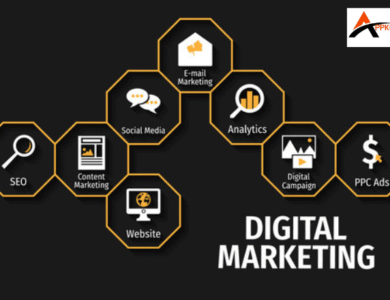
Most business owners are drowning in marketing data but starving for actual insights. You’ve got website analytics, social media dashboards, email reports, and ad platform metrics all screaming for attention. The numbers are everywhere, but what do they actually mean for your bottom line?
Here’s the problem – not all metrics are created equal. Some numbers make you feel good, but don’t translate to revenue. Others look boring but directly predict whether your business will grow or stagnate. Knowing the difference isn’t just helpful; it’s the gap between making smart decisions and throwing money at things that don’t work.

Revenue Attribution: Following the Money Back
The most important question in marketing isn’t “how many people saw this?” It’s “which marketing efforts actually brought in money?”
Revenue attribution tracks which campaigns, channels, or tactics led to paying customers. Not clicks, not impressions, not engagement – actual sales. This is where many businesses get stuck because tracking revenue back to its source takes effort and proper systems.
When a data-driven digital marketing agency sets up attribution properly, businesses finally see which marketing channels deserve more budget and which ones are just burning cash. Maybe that expensive trade show generated three clients who each spent $50,000. Maybe that social media campaign everyone loved produced exactly zero sales. You can’t know without tracking it.
Multi-touch attribution gets even more useful because it shows the entire customer journey. Someone might discover you through organic search, come back via a Facebook ad, and finally convert after reading an email. Each touchpoint played a role, and understanding that helps you invest smarter.
Customer Acquisition Cost: What Growth Actually Costs
CAC tells you how much you spend to acquire one new customer. Take your total marketing and sales costs for a period, divide by the number of customers acquired in that period, and you’ve got your number.
Let’s say you spend $10,000 on marketing in a month and get 20 new customers. Your CAC is $500. That number means nothing on its own – the question is whether those customers are worth more than $500 to your business.
This metric gets scary when businesses realize they’re spending more to acquire customers than those customers will ever generate in revenue. It happens more often than you’d think, especially with businesses that haven’t done the math. They just know they’re “doing marketing” without checking if it makes financial sense.
The goal isn’t necessarily to lower CAC to nothing. Sometimes an expensive acquisition makes sense if the customer lifetime value supports it. But you need to know the number to make that judgment.
Customer Lifetime Value: The Long Game
CLV (or LTV) estimates how much revenue a customer will generate over their entire relationship with your business. A customer who buys once for $100 has a different value than one who buys monthly for years.
Calculate basic CLV by multiplying average purchase value by purchase frequency and customer lifespan. For a subscription business, it’s simpler – monthly subscription price times average months retained.
The magic happens when you compare CLV to CAC. If you spend $500 to acquire a customer (CAC) but they generate $3,000 over their lifetime (CLV), you’ve got a healthy 6:1 ratio. That’s sustainable growth. If you spend $500 to acquire someone who generates $400 total, you’re in trouble.
Most successful businesses aim for at least a 3:1 ratio of CLV to CAC. Anything less and you’re not leaving enough margin for operational costs, mistakes, or market changes.
Conversion Rates at Every Stage
Conversion rate is simple – the percentage of people who take a desired action. But tracking it at multiple stages reveals where your marketing actually breaks down.
Website visitor to lead. Lead to a sales conversation. Conversation with the customer. Each stage has a conversion rate, and each one tells you something different about what’s working or broken.
Maybe you’re getting tons of website traffic, but only 0.5% become leads. That suggests either you’re attracting the wrong audience or your website isn’t compelling. Or maybe your lead-to-customer rate is strong at 40%, but you’re just not generating enough leads to feed the pipeline.
Tracking stage-by-stage conversion lets you identify the weakest link. Then you can fix that specific problem instead of just “doing more marketing” and hoping something improves.
Return on Ad Spend: The Reality Check
ROAS is straightforward – for every dollar you spend on advertising, how much revenue comes back? Spend $1,000 on ads and generate $4,000 in sales, that’s a 4:1 ROAS.
Different industries have different benchmarks, but generally, anything below 2:1 is concerning. At 2:1, half your revenue goes back to paying for the ads, and you still have product costs, overhead, and everything else to cover.
The tricky part is that ROAS looks at immediate returns, not lifetime value. A 3:1 ROAS might seem mediocre until you realize those customers stick around for years. Or a 5:1 ROAS looks fantastic until you discover those customers never buy again, and your margins are thin.
ROAS works best when combined with CLV and CAC data. Together, they tell you whether your paid advertising actually makes sense for your business model.
Channel Performance: Where Your Efforts Pay Off
Not every marketing channel works equally well for every business. Email might be your goldmine while social media barely moves the needle. Or organic search could drive most of your quality leads while paid ads bring in tire-kickers.
Track revenue, leads, and engagement by channel. Then look at the cost (time and money) you’re putting into each channel compared to what it delivers. This is where businesses often discover they’re over-invested in channels they enjoy using rather than channels that actually work.
A business owner who loves Instagram might spend 10 hours a week there generating 5 leads a month, while ignoring email marketing that could generate 50 leads with 2 hours of work. The data doesn’t lie, but you have to look at it honestly.
What to Do With All These Numbers
Tracking metrics isn’t the point – making better decisions is. Once you know your CAC, CLV, conversion rates, and channel performance, you can allocate budget and effort based on reality rather than guesses.
If organic search has your best conversion rate and lowest CAC, maybe you should invest more in SEO. If email has a strong ROAS but you’re barely using it, that’s low-hanging fruit. If your paid ads have terrible ROAS despite months of trying, maybe it’s time to shift that budget elsewhere.
The businesses that grow aren’t necessarily the ones with the biggest marketing budgets. They’re the ones who know their numbers well enough to invest in what works and cut what doesn’t. Everything else is just noise.
Conclusion:
Understanding and tracking important metrics is important to make sure your marketing efforts are being effective. There are dozens of metrics that you should focus on during campaigns. However, metrics like revenue attrition, customer acquisition, and customer lifetime value are some of the top marketing metrics you should keep an eye on.
These metrics will help you make more data-driven decisions and allocate your marketing budget more wisely. Keep on focusing on these metrics regularly, and you will start seeing positive results in the marketing campaigns.
Frequently Asked Questions (FAQs):
What is a marketing metric?
A marketing metric is a quantitative measurement that helps marketers measure the performance of a certain aspect of marketing. These metrics are essential for analyzing campaign performance.
Why are marketing metrics important?
Marketing metrics are important because they provide measurable insights into a marketing campaign. These insights help with making better marketing decisions and analyzing the overall performance of campaigns.
What is the most important metric to track in marketing?
Every useful metric is important to track in marketing. However, some of the most important ones are revenue attrition, customer acquisition cost, and customer lifetime value.
How to calculate marketing metrics?
Each marketing metric has its own method of measurement. In general, you have to put marketing data in a specific formula to get the results.
How do marketing professionals use key metrics?
Marketing professionals use key metrics to analyze the performance of their marketing efforts. They use metrics to see what’s working and what’s not to make further marketing plans.



